#microbiology education
Text
Neisseria spp. Growth and Classification | Gram Negative Bacteria Microbiology
#microbiology videos#medical student#medical education#medical study#medicine#microbiology education#microbiology student#microbiology#medical microbiology
3 notes
·
View notes
Text
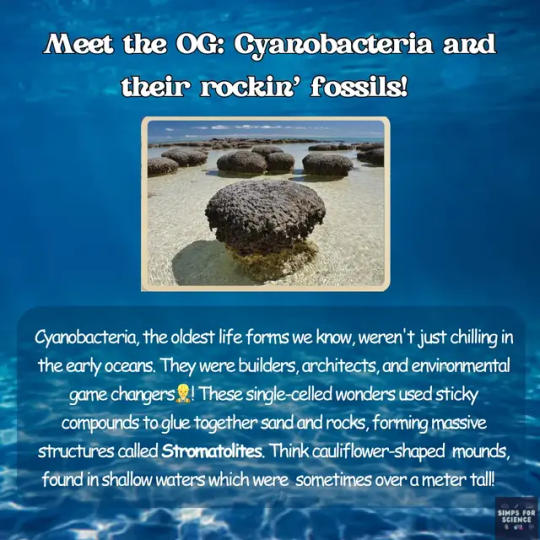


Being the most ancient⌛fossils, stromatolites stand as resilient monuments to Earth's 🌍infancy. Delve into the story📖 etched by them through this post. To dive deeper into the history of our planet, join us in our monthly series - 'Zoofabulous Time trek'.🏎️ Hold your breath, because we're about to dive deep into the past!
📸Image Credit: Wikipedia
#education#science#science facts#study blog#research scientist#discover#earth#zoology#animals#wildlife#fauna#cyanobacteria#fossils#ocean life#sea#scicomm#ediacaran#microbiology#australia#microbes#explore#paleontology#nature#archaeology#history#precambrian#planets#seashore#geology#prehistoric
17 notes
·
View notes
Text
Tldr (or just don't like scientific journals)? Read this:
#science#science communication#scicomm#stem#science education#science blog#biology#environmental science#climate change#climate emergency#climate and environment#environmental issues#environmental impact#antibiotic resistance#microbiology
13 notes
·
View notes
Text
Que bonita es la microbiología 🦠
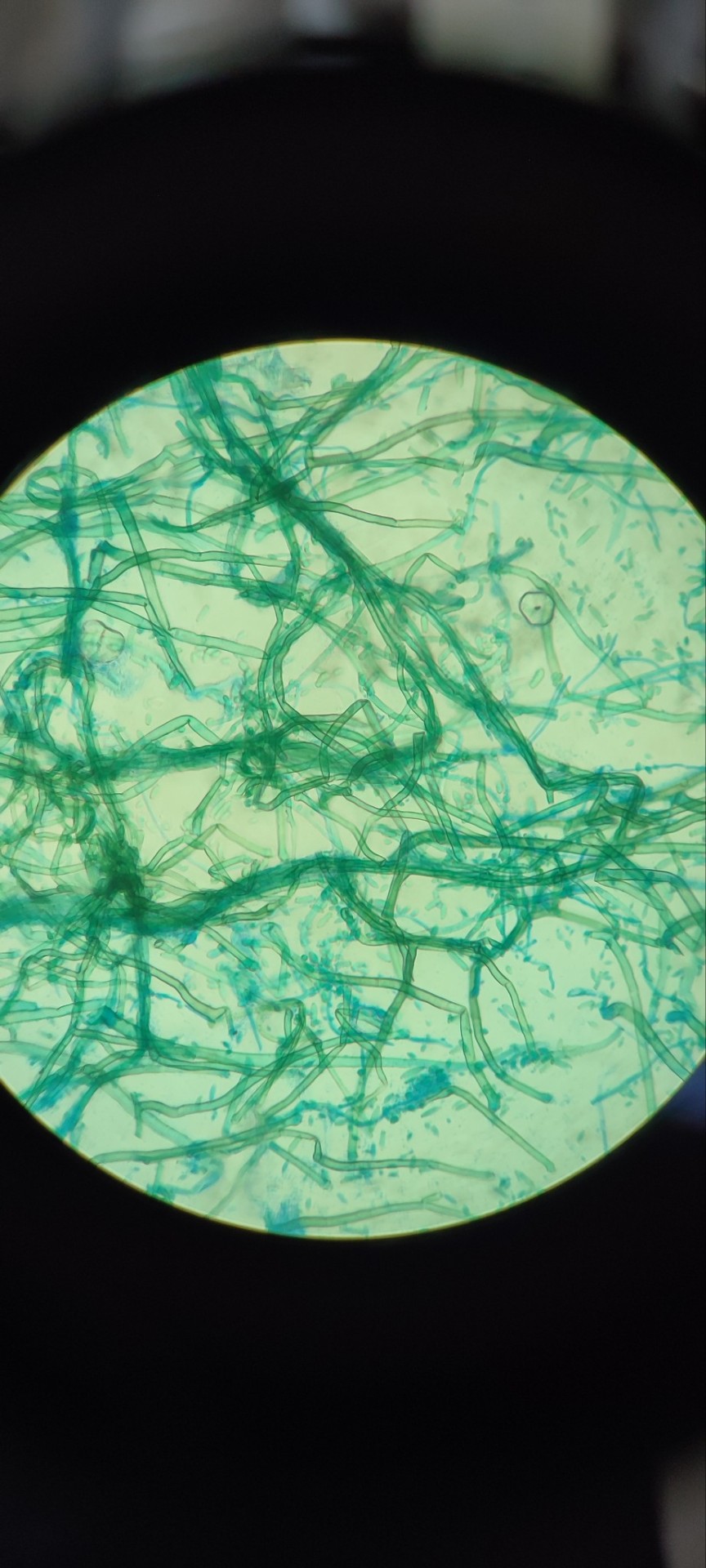



#love#microbiology#bacteriology#bacterium#bacteria#science#scientology#scientific#medicine#nurses#education#team green#professional#negro#microscope#parasite
25 notes
·
View notes
Photo






This was based off of a #STEMARegional submission by @GalacDraws on Twitter (their main is GalactaKiller) that I selected to include in my region.
As with any regional mons that deal with canon ones, these designs are separate from the region, and the Stema Region is not dependent on canon mons.
This is a Shellder line based off of the heat shock proteins that extremophiles, living beings that live in conditions that are extreme to many other living things, make a lot more of. Heat shock proteins are made by most living things, including bacteria and humans, and they are made in multiple stressful conditions, not just heat. Many heat shock proteins are chaperone proteins which help other proteins in retaining their form.
Shellder (Fire/Fighting): These Shellders are more accustomed to the searing hot environments near deep sea volcanic vents. Larger Shellders can sometimes pull in a smaller damaged Shellder with their tongue and repair the other's shell.
Cloyster (Fire/Fighting): When they see a damaged Shellder, these Cloysters would often pick them up and heal their shells. These Cloysters have long but powerful shells that can crush boulders and other obstacles in the deep sea.
#pokemon#art#fakemon#science#biology#microbiology#protein#education#chaperonin#stem#Logic & Passion#oc#steam#regional variant#shellder#cloyster
82 notes
·
View notes
Text
Unveiling the Microscopic World: Exploring B.Sc Medical Microbiology in Dehradun
Microbiology, the study of microscopic organisms, is a field that holds the key to solving mysteries at the cellular level. The pursuit of knowledge in this domain becomes all the more captivating in the picturesque city of Dehradun, which is well-known for its educational institutions. This article explores the field of B.Sc. Medical Microbiology, highlighting the offerings of the top colleges in Dehradun and providing information on the course details, eligibility requirements, and the invaluable contributions of the college forum.
B.Sc Medical Microbiology: A Glimpse into the Microbial World:
Understanding Microorganisms: The B.Sc Medical Microbiology program is designed to provide students with a comprehensive understanding of bacteria, viruses, fungi, and other microorganisms. It forms the foundation for exploring their roles in health, disease, and the environment.
Clinical Applications: Medical Microbiology goes beyond laboratory studies; it extends into clinical applications, involving the identification, prevention, and control of infectious diseases. Students delve into the practical aspects of diagnostic procedures and microbiological techniques.
Immunology and Public Health: The curriculum often includes in-depth modules on immunology, emphasizing the body's defense mechanisms against pathogens. Additionally, students gain insights into public health aspects, learning how microbiology plays a pivotal role in disease prevention and control.
Eligibility Criteria for B.Sc Medical Microbiology:
To embark on the journey of unraveling the microbial world through B.Sc Medical Microbiology in Dehradun, prospective students must fulfill the following eligibility criteria:
Educational Qualifications: Typically, candidates should have completed their 10+2 education in the science stream with a focus on biology. Meeting specific percentage requirements in relevant subjects is often a prerequisite.
Entrance Examinations: Some colleges in Dehradun may require students to appear for entrance examinations to assess their aptitude for the program. These tests aim to ensure that candidates possess the foundational knowledge needed for successful engagement with the curriculum.
Course Description and Specializations: The three-year, six-semester B.Sc. Medical Microbiology program covers a wide range of topics, such as Microbial Physiology, Virology, Mycology, Immunology, and Medical Parasitology. Internships, fieldwork, and practical sessions are essential components that give students practical experience in laboratory techniques and diagnostic procedures.
The Best B.Sc Medical Microbiology Colleges in Dehradun:
Dehradun stands proud as a hub for quality education, and the best B.Sc Medical Microbiology colleges in the city contribute significantly to this reputation. The college forum serves as a valuable resource for aspiring students, offering insights into the top institutions, their faculty, infrastructure, and placement opportunities. Through the forum, students can make informed decisions about their educational journey, ensuring they enroll in institutions that align with their academic and career goals.
Conclusion:
Starting a B.Sc. Medical Microbiology Course in Dehradun is not only a quest for knowledge but also an investigation of the invisible world that has a significant impact on human health. The requirements for eligibility, the specifics of the courses, and the abundance of information offered by the college forum are important factors that direct prospective students to the top B.Sc. Medical Microbiology programs in Dehradun. As the microscopic world reveals itself, students are furnished with the abilities and information necessary to make a significant contribution to the field of medical microbiology.
2 notes
·
View notes
Photo


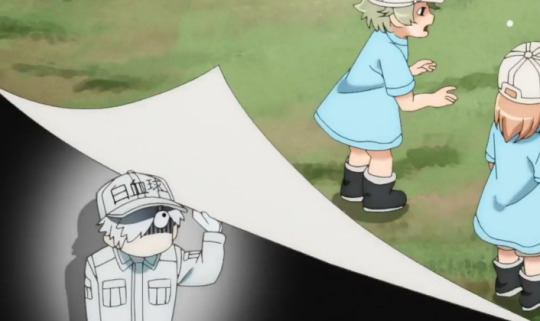


Finally getting around to watching cells at work season 2 and I’m so delighted by the amount of funny WBC faces just in the first two episodes
#unapersonal#i still have a bit of time leftover on that funimation free trial i used to watch the vesperia movie so i'm using it wisely on this#if you can handle kinda copious amounts of cartoon blood it's a fun educational time#i think it explains immunology/microbiology stuff well even from the perspective of someone whose taken a few classes in that area lol
4 notes
·
View notes
Text
Cat’s Claw (Uncaria Tomentosa)
It is a liana that grows in the jungles of South America, where for almost 2,000 years it has been used for medicinal purposes. The decoction of this Amazonian medicinal plant is widely used in traditional medicine as an anti-inflammatory, as well as for the treatment of diabetes, various tumors, cancer, viral processes, menstrual cycle irregularities, convalescence and general weakness.
Chemical composition
The most important group of active ingredients in the chemical composition of this plant is that of its numerous alkaloids, these being basic, nitrogenous compounds that are generally endowed with marked activities and/or toxicity. Compared to other plant species, including those of the genus Uncaria, cat's claw contains them in unusual abundance.
Pharmacological properties
Uncaria tomentosa is classified as an anti-inflammatory medicinal plant. But at present, numerous interesting studies have been published on its pharmacological properties, showing that Uncaria tomentosa has cytostatic, antimutagenic, antiviral, immunostimulant, antiradical properties and, in high doses, contraceptive effect.
Antiinflamatory effect
On the one hand, its anti-inflammatory activity has been proven in both in vivo and in vitro studies. This activity has been attributed, at least in part, to the quinovic acid glycosides. But it has also been seen that this effect is less if isolated quinovic acid heterosides are used than if extracts of the drug are used, so it is very likely that this biological activity is enhanced by other compounds that act synergistically. Therefore, it is preferable to use the complete drug.
Antimutagenic and citostatic effect
In this sense, the scientific evidence is still scarce, but it points towards the use of Uncaria tomentosa in the prevention and treatment of cancer, since it reveals a beneficial action in the various phases of the disease. In some of the most significant studies on the cytostatic and antimutagenic effect of cat's claw, it has been shown that it increases the level of immunoglobulin in cancer patients, as well as that its aqueous extract owes some of its antitumor properties to a mechanism of selective induction of apoptosis. Likewise, extracts of the drug have been shown to exhibit cytostatic activity in human homopoietic tumors. Other studies show an inhibitory effect on abnormal cell proliferation due to a direct action on DNA polymerases.
Immunoestimulant effect
Recent tests carried out with drug extracts containing approximately 6 mg/g of total oxindoles (quantified by HPLC), indicate that Uncaria tomentosa stimulates the production of interleukins 1 and 6 (IL-1, IL-6) by alveolar macrophages in the rat, in a dose-dependent relationship. It has also been proven that cat's claw increases the phagocytic activity of neutrophilic granulocytes and macrophages and increases the number of monocytes in active phases of the peripheral circulation. There is no alteration in the proliferation of T lymphocytes under normal conditions, but there is an increase in the presence of antigens.
Antiviral effect
Algunos componentes de la uña de gato (derivados del ácido quinóvivo y heterósidos triterpenos), son agentes antivirales, predominantemente con acción contra los ARN-virus encapsulados, acción asociada también a un efecto antiinflamatorio.
Anti-radical effect
It has been proven that certain extracts of Uncaria tomentosa have antioxidant activity in vitro, being able to capture free radicals and, therefore, protect against oxidative stress.
Resources
Arteche A, Vanaclocha B, Güenechea JI. Fitoterapia. 3.ª ed. Vademécum de prescripción. Plantas medicinales. Barcelona: Masson; 1998.
Bruneton J. Elementos de fitoquímica y de farmacognosia. Zaragoza: Acribia; 2001.
Carretero E. Alcaloides: derivados del triptófano y otros alcaloides (III). Panorama Actual Med. 2001;25:442-9
Cayunao C, Erazo S, Backhouse N, Bachiller L, Zaldívar M, García R. Estudio de la actividad antimicrobiana de un alcaloide oxindólico y actividad antioxidante de diferentes extractos de Uncaria tomentosa (Willd.) DC. Revista de Fitoterapia. 2004;4(2):152-4.
Evans WC. Farmacognosia. Madrid: Interamericana-McGraw-Hill; 1986. p. 519-40.
Font P. Plantas Medicinales. El Dioscórides renovado. Barcelona: Labor; 1992.
Kuklinsi C. Farmacognosia. Barcelona: Omega; 2000.
Lemaire I, Assinewe V, Cano P. Stimulation of interleukin-1 and 6 production in alveolar macrophages by the neotropical liana, Uncaria tomentosa (uña de gato). J Ethnopharmacol. 1999;64:109-15.
Peris JB, Stübing G, Vanaclocha B. Fitoterapia aplicada. Valencia: COF de Valencia; 1995.

#science#biology#ask microbiology#college#education#school#student#plants#medicinal plants#medicine#medicinal
16 notes
·
View notes
Text
Department of Microbiology ( Streaking 🧫)
youtube
By @hayat0ashi 👩🏻🔬🖤 @Mo sileem ✨
#Microbiology#Medical laboratories 🔬#Medical labs#specialists 👩🏻🔬#education#technicians 👨🏻🔬#students#Medical Analysis 🧡#Youtube
4 notes
·
View notes
Text
Bacteria of the Week: Staphylococcus aureus
Staphylococcus aureus (staph) is a type of bacteria found on people’s skin. Staph bacteria are usually harmless, but they can cause serious infections that can lead to sepsis or death.

Name meaning: prefix "staphylo-" meaning cluster of grapes, suffix "coccus" meaning spherical
Microbiology description: a facultative aerobic, Gram-positive, coccal bacterium, nonmotile and does not form spores.
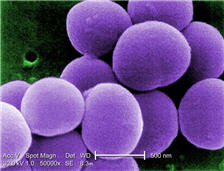
Everyone's skin has bacteria all over it! This is called your skin microbiome. Staph are a common commensal (colonizing on human skin), and are totally normal and can cause no issues. S. aureus specifically usually live in your nose. Approximately 30% of the human population is colonized with S. aureus. The issues with these bacteria arise when they get inside your skin, like through a cut, or through invasive devices (like an IV, or catheter). This is referred to as an opportunistic pathogen, since normally it can live on your skin and cause no problems, or if given the chance, it can cause infections and severe disease.
One type of S. aureus you may have heard of is MRSA- Methicillin Resistant Staphylococcus aureus. This means a common antibiotic class, beta-lactams, doesn't work on the bacteria. Although MRSA may be more heard of, any type of staph infection can be dangerous. Anyone can develop a staph infection, although certain groups of people are at greater risk, including people with chronic conditions such as diabetes, cancer, vascular disease, eczema, lung disease, and people who inject drugs. In healthcare facilities, the risk of more serious staph infection is higher because many patients have weakened immune systems or have undergone procedures.

Outside of a hospital, MRSA and MSSA (methicillin sensitive Staphylococcus aureus) most often cause skin infections. In some cases, it causes pneumonia, and other infections. If left untreated, staph infections can become severe and cause sepsis (the body’s extreme response to an infection).
Once in the body, S. aureus secretes toxins that damage neutrophils (a type of white blood cell that act as your immune system's first line of defense), and can take nutrients from your cells. S. aureus likes to steal iron in particular. S. aureus can also create biofilms (a complex structure of bacteria that form a matrix and attach to surfaces), which allow the bacteria to persist on plastics and resist host defenses or antibiotics.

How do we fight off S. aureus infections? Especially a MRSA infection?
You can take these steps to reduce your risk of MRSA infection:
Maintain good hand and body hygiene. Clean hands often, and clean your body regularly, especially after exercise.
Keep cuts, scrapes, and wounds clean and covered until healed.
Avoid sharing personal items such as towels and razors.
Get care early if you think you might have an infection.
I'll post more about MRSA specifically later, especially it's epidemiology since the spread of MRSA is fascinating, and mostly did not affect healthy people prior to the 1990's.
Signing off, stay healthy, and wash your hands!
#science#science is cool#biology#stem#vaccinate your kids#get vaccinated#chemistry#microbiology#bacteria#disease#cells#genes#cells at work#science is awesome#education#learning#micro#immunology#medicine#medical research#pathology#never stop learning#educators#epidemiology#public health#infectious diseases#pandemic#staphylococcus aureus#staph#follow me for more
11 notes
·
View notes
Text
Rhoeo leaf experiment | Study of Representative Plant by Microscopy

Aim -
To prepare stained temporary mount of leaf peel (Rhoeo plant leaf)
Materials Required -
A potted plant (Rhoeo species)
Watch Glass
Forceps
Dropper
A compound Microscope
Procedure -
1. A healthy leaf from a potted plant is taken.
2. A part of the peel was removed with the help of forceps from the lower surface of the leaf.
3. The peel was then placed in a watch glass, which contain water in it
4. With the help of forceps the peel was placed on a clean glass slide.
5. Lastly the slide was observed under the microscope .
Observation - Read here
2 notes
·
View notes
Text

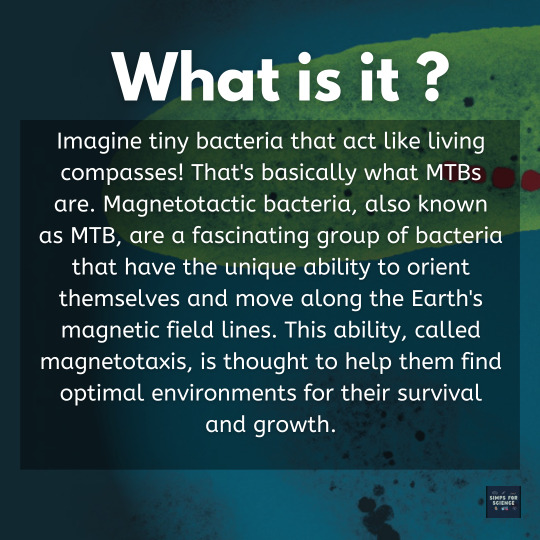





🤔💭 Have you ever imagined anything like a 'Living Compass' ?🧭🦠These tiny titans cum bacteria have superpowers: they navigate using Earth's magnetic field! Swipe ➡️ through this post to know how these beings are able to sense north ⬆️ 🧲 wherever they go!
#science#science facts#education#discover#scicomm#study blog#explore#research scientist#physics#earth#bacteria#bacteriology#microbiology#microbes#microbiota#microbiome#magnetism#magnetic#magneto#magnetite#magnetic field#magnets#magnetosphere#scientist#scientific illustration#cool science#scifi#sci fi and fantasy#scifiedit#simps for science
11 notes
·
View notes
Text
#science#science communication#scicomm#stem#science education#science blog#biology#Microbiology#Cells
17 notes
·
View notes
Text
Nursing Pre-Reqs DONE!
Oh my gosh! I never thought id see the end of it! Especially since I took the first covid year off from school. I know myself well enough by now to know that I'm not the type of student to learn well online only. I need face to face interaction, thats just how I learn best. I might have a bit of ADD/ADHD so theres that too lol
The point is, I am done with them! My last one was Microbiology and boy was that a challenge! In my experience, it wasn't so much the material, I found it very interesting in fact, It was that my professor added a chapter to his lesson plans that took him longer to lecture through than he originally calculated lol and set the whole class back two weeks! So the rest of the term just felt rushed and we were all struggling to catch up. I managed to squeeze out a B for my troubles and so here I am finally done with this part of the journey. Super excited for the next step!
#nurse life#nursecore#nursing#nursing student#college#college life#rn student#education#beauty#study hard#student#studies#microbiology#student life#school
3 notes
·
View notes
Text

2 notes
·
View notes
Text




hiii! some stuff from microbiology practices in medical college
There're culture of intestinal bacteria in the first two photos, and colored biomaterial with cocci and fungus in the last two.
Yup, nurses are studying basic microbiology :)
1 note
·
View note